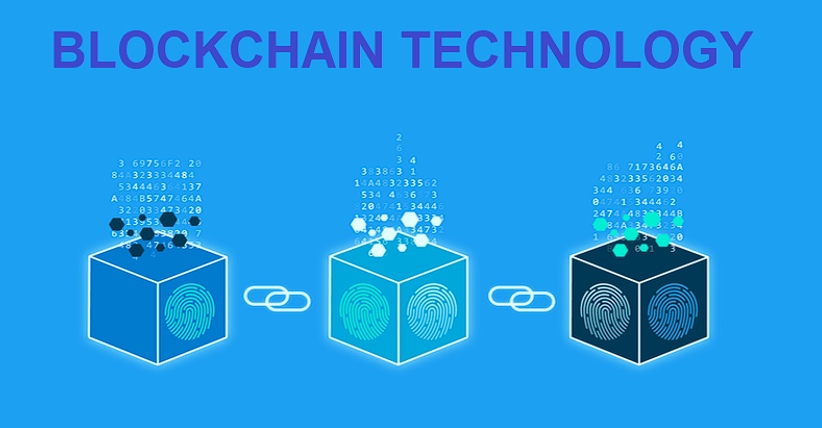Imagine your digital fortress under siege, the locks picked by unseen cyber bandits. Such is the harsh reality for blockchain technologies facing relentless attacks. But it’s not all doom and gloom. Innovation in blockchain security due to attacks is our silver lining, the unexpected hero rising from the chaos. We’ve learned hard lessons and turned them into genius breakthroughs. From gaping holes in our walls, we’ve sculpted stronger barriers, proving that necessity isn’t just the mother of invention—it’s the architect of impenetrable security. Join me as we explore how blockchain’s clever countermeasures are changing the game.
Recognizing Threats: What Attacks Have Taught Us About Blockchain Security
Dissecting Notable Blockchain Breaches
Think of a blockchain like a digital fortress. This fortress has been under siege lately. Hackers are smart and fast. They exploit tiny cracks in the system’s armor. Once inside, they can steal or cause chaos. But the good news is that we’ve learned from these attacks.
Each hack on a blockchain reveals weaknesses. Imagine a super team of wise builders and protectors swooping in after a break-in. They patch the holes and make the walls even tougher to break into next time. That’s what’s happening in real-time with blockchain security enhancements.
For example, we saw that even smart contracts can be flawed. Smart contracts are like robot promises—they automatically carry out deals on the blockchain. But if there’s a bug, it can lead to a mess. Hackers scan for these weak points. And just like that, funds can vanish.
What do we do to stop this? We get to work making these smart contracts bulletproof. We’re now creating smarter, more secure digital ledgers that learn from past mistakes.
Strengthening Vulnerabilities Post-Attack
After an attack, the key is not just to fix what broke. We must improve it so it can’t break the same way again. We’ve started weaving advanced consensus algorithms into the fabric of blockchain. This way, the community can agree on what’s legit in a safer, stronger manner.
Then there’s the magic of post-quantum cryptographic solutions. These are next-level secrets codes that even future supercomputers can’t crack. They’re like security guards from the future, protecting our crypto coins today.
We’re also combatting crypto attacks by upgrading our blockchain security layers. Think of these as an all-seeing eye, watching over the network. They spot sneaky hackers trying to slip through unnoticed. With this improved shield, our digital treasures remain locked tight.
And when we talk about ledger security technology, we’re referring to the backbone of blockchain. We strengthen it by testing over and over for weak spots. We look at every possible way something could go wrong and plan for it. That’s blockchain penetration testing.
Is the network open to everyone (permissionless) or just to some people (permissioned)? Our protection game changes based on this. It’s like when you’re at home, you lock the doors, but at a concert, you keep an eye on your bag at all times. It’s the same principle with blockchains.
What’s beautiful is when the blockchain community rallies together post-hack. We come up with innovative encryption methods. We build more resilient infrastructures. We fortify our defenses, ready to meet any challenge head-on.
In essence, each attack makes us sharper. It forces us to innovate. Our digital fortress becomes more formidable with every lesson learned. It becomes adaptively secure that changes with threats and remains several steps ahead of unauthorized intruders. It’s this remarkable adaptability that signals the bright future of blockchain security, shining like a beacon of hope in the continuous fight against cyber threats.
Reinventing the Security Wheel: Innovations Sparked by Necessity
Introduction of Advanced Consensus Algorithms
Consensus algorithms are the core of blockchain security. These rules keep all users honest. Recent attacks pushed us to improve them. Now, consensus algorithms work smarter, not just harder.
A consensus is how all the parts of the blockchain agree. It’s like a team game, where everyone must play by the rules to win. A good consensus keeps the blockchain safe. It checks all transactions and users. The better the rules, the safer the ledger.
We figured out that we needed better game plans. We made the rules tougher, so cheaters can’t play. This helps stop hacks before they start. We use advanced math to make sure everyone’s playing fair.
The Advent of Post-Quantum Cryptographic Solutions
Post-quantum cryptography is a new shield in our armor. It fights off attacks from future super-computers. These computers are not like the ones we have today. They can break codes we thought were safe.
Traditional locks won’t work against these computers. So, we need new locks. These are hard for even super-computers to crack. We call these post-quantum locks. They are the future of safe blockchains.
Quantum attacks are like super ninjas of the future. But we’re ready with super shields. They use tricky math to keep blockchains safe. We must think ahead to win this security fight.
In a nutshell, blockchain security is always growing to combat new threats. We saw issues and made our systems tougher and smarter. We share this with everyone to make all blockchains safe. Attacks make us smarter and our blockchains stronger.
Increasing Resilience: Implementing Multi-Layered Defense Strategies
Deploying Blockchain Intrusion Detection Systems
We need many walls to keep hackers away, not just one. In blockchain, we build these walls with layers. Each one has a job to stop bad folks from breaking in. Think about your home. You have doors with locks, maybe an alarm. Your computer files need strong guards, too. This is where blockchain security layers work magic.
Blockchain protects money and info like a tough guard. As experts, we add smart tricks to make it safer. One smart trick is like a spy. It finds sneaky hackers before they can do harm. This spy is a blockchain intrusion detection system. It watches the blockchain and sends out an alert if it spots trouble. By catching these sneaky hackers, we make sure people’s stuff stays safe.
A cool part of these systems? They learn. They get smarter about stopping attacks over time. So, as they see more tricks from hackers, they get better at guarding the blockchain. Now, let’s dig in a bit more about one way to keep our blockchain safe.
Smart Contract Protection Tactics and Audits
Smart contracts are promises in code. They run on their own when certain things happen. This sounds great, but they can have bugs. Bugs mean hackers might get a chance to steal or mess stuff up. We must check these contracts well to fix any weak spots. This is called a smart contract audit.
Imagine you build a cool robot. Before you let it do tasks, you test it. You make sure everything works just right. That’s what an audit does for smart contracts. Audits look for mistakes in the code or flaws that could let hackers in. Like teaching our robot the right moves so it doesn’t trip and fall.
We do these checks with tools and brain power. Tools scan the code, and experts like us look for tricky spots. We find the parts where something might go wrong and we fix them. This helps us stop hackers from sneaking in through smart contracts.
Blockchain security is like a game. Hackers try to find ways in, and we make sure they can’t. Every day, we learn from the hackers and build stronger walls. We use tools, rules, and smart thinking to keep blockchains tough. When we do this right, everyone using blockchain can feel safe. And that’s what being a blockchain security expert is all about. It’s a big job, but we’re up for it!
Future-Proofing Blockchain: Anticipating and Pre-empting Cyber Threats
Evolution of Blockchain Threat Intelligence and Risk Assessment
We learn from every attack on blockchain systems. Each breach teaches us how to build smarter. The fight to keep blockchains safe will never stop, as threats grow every day. We use threat intelligence as a keen eye. It spots bad patterns and tells us what’s coming next.
Data tells us a lot. We check patterns from past attacks to predict future ones. This becomes our guide to stop hackers in their tracks. Decoding the risks in blockchain isn’t simple, but it’s needed. We learn to harden our systems against known and new dangers.
Risk assessment is like a health check for blockchains. It shows where we’re weak. It tells us where to bulk up our defenses. We find the cracks before the bad guys do and patch them fast.
Crafting Resistant Blockchain Architectures and Adaptive Security Policies
Building tough blockchain systems is a must. We want structures that can take a hit and keep your data safe. Blockchains must be resistant. That means being ready for anything, from tiny bugs to full-scale attacks. It’s like having a safe that’s not just tough on the outside but smart on the inside too.
Our aim is to have systems that change as risks do. That’s adaptive security. It’s a plan that shifts to handle new threats as they pop up. We watch every move on the network. This way, we can react instantly when something looks wrong.
Cyber-attacks won’t wait for us. We must move fast to protect your data. We seal off every entry that might let hackers slip through. We work hard to make sure your trust is never broken.
To defend against blockchain hacks, we dive deep. We want to know every trick that could be used to break in. Then, we build walls so high and so smart, hackers look elsewhere. You want to keep your digital assets safe. So we do everything to make that happen.
Ledger security technology is our focus. It keeps the record of transactions safe and sound. With strong ledgers, it’s tough for anyone to mess with your data. We use encryption that’s so new and sharp, it’s like armor for your data. It keeps out everyone but you.
Smart contract protection strategies are critical. These are the deals that run by themselves on the blockchain. We test them over and over, making sure they only do what they should. Not a step out of line.
We don’t just work on keeping cyber threats out. We work to spot them if they slip in. Blockchain intrusion detection systems are our watchdogs. They bark at the slightest whiff of something wrong going on. It’s our first line of defense, alert and always on.
We don’t stop at being good enough today. We keep pushing, testing our own systems. It’s like a never-ending game of cat and mouse. We test our blockchains to the limit, bend but don’t break. That’s blockchain penetration testing.
Each step forward means we’re turning blockchain into a fortress. From protecting enterprises to helping people sleep easy at night, our work never rests.
Securing your digital future is not just our job; it’s our battle cry. We stand guard, crafting shields out of code, predicting moves, and staying ahead. Your trust is our charge. We’re not just watching the horizon; we’re building it.
In this post, we’ve learned lots from past blockchain attacks. We saw big breaches and how they made blockchain safer. New smart algorithms and tough security against quantum threats started from these challenges.
We also checked out strong defense layers. Systems to find intruders and ways to make smart contracts safer show huge steps forward.
To protect the future of blockchain, we’re getting smarter. We’re predicting risks and building systems that can bend and not break. Taking these steps means we can trust blockchain more each day.
This journey makes blockchain super strong. Why? Because facing challenges head-on teaches us to build better and think ahead. Let’s keep our blockchain safe, smart, and ready for what comes next!
Q&A :
How has blockchain security evolved in response to cyber attacks?
In the arms race against cyber threats, blockchain security has made significant strides. Techniques such as advanced encryption, real-time threat detection, and decentralized consensus mechanisms have all improved as a result of increased attack sophistication. Enhancements in smart contract audits and the development of more secure blockchain frameworks also demonstrate the evolution in security practices.
What innovative measures are being implemented to enhance blockchain security?
The blockchain landscape is constantly witnessing innovation in security protocols. Innovations include the integration of zero-knowledge proofs to facilitate transactions without revealing any underlying information, layering solutions for off-chain transactions, and the use of multi-signature wallets to provide an additional layer of security. Furthermore, AI-driven analytics are increasingly utilized to monitor network activity and preemptively identify potential vulnerabilities.
Are there new blockchain technologies emerging to prevent hacking attempts?
In response to the escalating challenge of hacking, new blockchain technologies are emerging. For instance, quantum-resistant blockchains are being developed to withstand potential quantum computer attacks. On the software side, platforms are incorporating features like formal verification for smart contracts, which mathematically proves their correctness and reduces the risk of exploits.
How do attack vectors influence blockchain security innovation?
Attack vectors are a driving force behind blockchain security innovation, as each new type of attack prompts the development of specific countermeasures. For example, after the DAO attack, the Ethereum network underwent a significant upgrade to prevent similar incidents. With the rise of 51% attacks, innovative consensus algorithms are being designed to make such attacks less viable. These continuous challenges push the needle for creating more robust and resilient security solutions.
What role does community involvement play in blockchain security innovation?
Community involvement is pivotal in blockchain security innovation. Open-source projects benefit from collective scrutiny, where a vast number of developers and researchers contribute to identifying and patching vulnerabilities. Bug bounty programs and collaborative efforts, such as working groups focusing on security best practices, are also integral in fostering an environment where continuous innovation is encouraged to protect against attacks.





RELATED POSTS
What is the current market price of Bitcoin? Insights into today’s fluctuating values
What is the current market...
The impact of future consensus mechanisms on scalability and security
"Future consensus mechanisms impact blockchain...
Blockchain in Schools: Navigating the Challenges of Student Data Management
Understanding the Challenges of Implementing...
What is the purpose of blockchain technology?
What is the purpose of...
Understanding the Stock to Flow Model – How to Optimize Investment
The Stock to Flow Model...
Dawn Airdrop – Unique Reward Mechanism and How to Participate
Dawn Airdrop stands out with...
limitations of traditional systems in transparency: Unveiling the Gap
Limited transparency in old systems...
What is Animoca Brands? Learn about the Blockchain empire
In the dynamic world of...
Unlocking the Future: Top Benefits of Using Blockchain Technology
Benefits of Using Blockchain Technology:...
The Evolution of Cryptocurrency and Blockchain Technology – 7 Things to Look Forward To
Cryptocurrency and Blockchain Technology have...
What is a honeypot in Crypto? Unveiling the Deceptive Traps!
What Is a Honeypot in...
Saitama Coin: A deflationary Token with a promising future
Saitama Coin (SAITAMA) is a...
Replay Attacks on Blockchain: Protecting Your Digital Assets
Protect your digital assets from...
Economic Bubble in Crypto – 3 Experiences to deal with it
In the volatile cryptocurrency landscape,...
Don’t miss out on the DogX, Airdrop to X users
“DogX, Airdrop to X users”...
What is a Doji Candle? Learn to identify market uncertainty
What is a Doji candle...